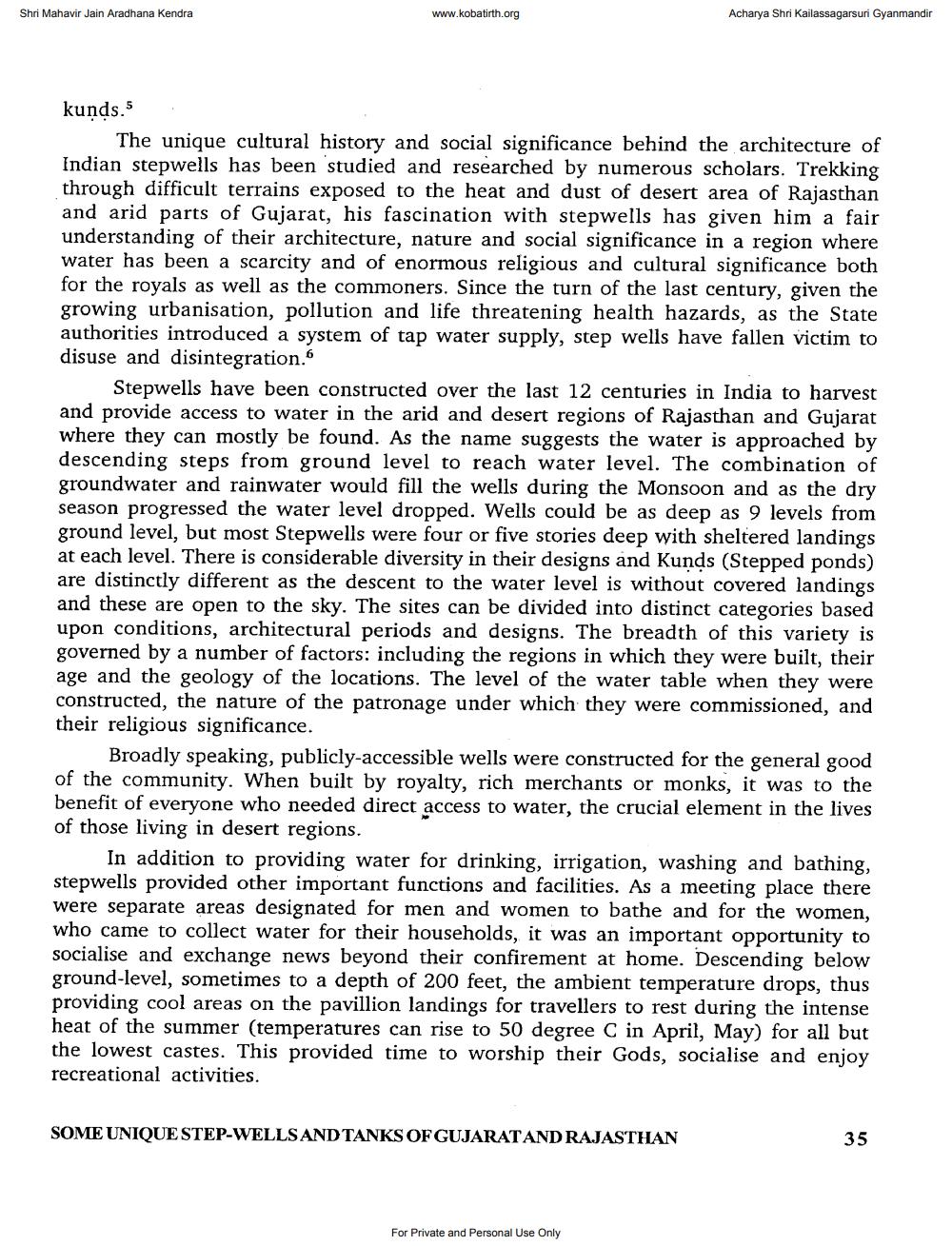________________
Shri Mahavir Jain Aradhana Kendra
www.kobatirth.org
kunds.
The unique cultural history and social significance behind the architecture of Indian stepwells has been studied and researched by numerous scholars. Trekking. through difficult terrains exposed to the heat and dust of desert area of Rajasthan and arid parts of Gujarat, his fascination with stepwells has given him a fair understanding of their architecture, nature and social significance in a region where water has been a scarcity and of enormous religious and cultural significance both for the royals as well as the commoners. Since the turn of the last century, given the growing urbanisation, pollution and life threatening health hazards, as the State authorities introduced a system of tap water supply, step wells have fallen victim to disuse and disintegration."
Acharya Shri Kailassagarsuri Gyanmandir
Stepwells have been constructed over the last 12 centuries in India to harvest and provide access to water in the arid and desert regions of Rajasthan and Gujarat where they can mostly be found. As the name suggests the water is approached by descending steps from ground level to reach water level. The combination of groundwater and rainwater would fill the wells during the Monsoon and as the dry season progressed the water level dropped. Wells could be as deep as 9 levels from ground level, but most Stepwells were four or five stories deep with sheltered landings. at each level. There is considerable diversity in their designs and Kunds (Stepped ponds) are distinctly different as the descent to the water level is without covered landings and these are open to the sky. The sites can be divided into distinct categories based upon conditions, architectural periods and designs. The breadth of this variety is governed by a number of factors: including the regions in which they were built, their age and the geology of the locations. The level of the water table when they were constructed, the nature of the patronage under which they were commissioned, and their religious significance.
Broadly speaking, publicly-accessible wells were constructed for the general good of the community. When built by royalty, rich merchants or monks, it was to the benefit of everyone who needed direct access to water, the crucial element in the lives of those living in desert regions.
In addition to providing water for drinking, irrigation, washing and bathing, stepwells provided other important functions and facilities. As a meeting place there were separate areas designated for men and women to bathe and for the women, who came to collect water for their households, it was an important opportunity to socialise and exchange news beyond their confirement at home. Descending below ground-level, sometimes to a depth of 200 feet, the ambient temperature drops, thus providing cool areas on the pavillion landings for travellers to rest during the intense heat of the summer (temperatures can rise to 50 degree C in April, May) for all but the lowest castes. This provided time to worship their Gods, socialise and enjoy recreational activities.
SOME UNIQUE STEP-WELLS AND TANKS OF GUJARAT AND RAJASTHAN
For Private and Personal Use Only
35




